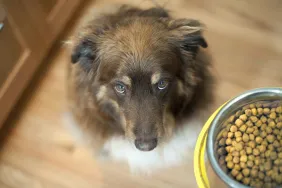
Top 10 Signs of Cancer in Dogs
It’s a dog owner’s worst nightmare hearing the four words: “Your dog has cancer.” But it’s a stark reality for many. In fact, one in three dogs will develop cancer, according to the National Canine Cancer Foundation. Cancer occurs in both mixed-breed and purebred dogs. Depending on the type of cancer, some breeds like Great Danes, Saint Bernards, Boxers, Boston Terriers, and Golden Retrievers are high risk. Canine cancer can happen at any age but most often it occurs in older dogs, which is partially because dogs are living longer due to modern, enhanced nutrition and veterinary care.








